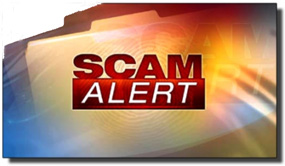Let’s face it – we live in “interesting” times.
Fraudulent, fake and untrustworthy websites are all over the Internet these days, and it’s easy to find yourself on one without even realizing it.
According to Internet Live Stats there are currently close to two billion websites on the World Wide Web. Unfortunately, not all of them are legitimate.
With all of those sites competing for your clicks from the Google search results and links on other websites, it’s extremely important to be able to determine which sites are legitimate and which ones are fraudulent and/or unreliable.
Luckily, there are several things you can do that can help you avoid those “bad” websites.
How to evaluate a listing on a search results page
When you search for something on Google, Bing or most any other search engine you’ll be presented with a list of web pages that (in the opinion of the search engine) best match the word or phrase you searched for.
All of the top-tier search engines try their very best to provide you with the most relevant and safest page suggestions they can come up with for your queries, but sometimes a shady page/website can slip through the cracks and be listed among the legitimate search results.
Here are a few tips that can you identify the “bad” pages and sites before you even click the links to visit them:
1 – Do you see any obvious misspellings in the page title or headline? Does the title contain poorly constructed grammar or appear that it was written by a non-native speaker?
Most legitimate websites go the extra mile to ensure that their page titles and headlines are properly written with all the words spelled correctly. Any obvious errors should immediately raise a huge red flag.
2 – Check the URL of the page to see if it looks safe and legit to you.
The first thing to consider is the extension that’s tacked on to the end of the site’s domain name. Does the extension indicate that the site is based in a foreign country?
Some countries are notorious for being home to scammy and fraudulent websites. A good rule to follow is to be wary of visiting any site with a domain name that ends in anything other than .com, .net, .org, .edu, .gov.
Note: The .edu and .gov extensions are generally considered to be the safest and most trustworthy extensions of all because their use is limited to qualified educational and governmental institutions.
As a general rule, any website with a domain name that ends with one of these extensions can be considered legitimate and safe by default.
Do keep in mind that this is just a general rule. Just because a particular site’s domain name ends in something besides the extensions mentioned above doesn’t automatically mean it’s a bad site. It could indeed be legitimate.
But that being said, with so many sites with the most trustworthy extensions to choose from for the vast majority of searches, why take a chance?
Of course we Americans don’t have a monopoly on legitimate websites, and we have our own share of scammers as well.
If you happen to live somewhere other than the United States you’re probably already familiar with the most common (and most trustworthy) domain extensions that are commonly used in your region. That’s why I recommend that you use your own judgement when deciding whether you should visit a particular website.
Note: The country-specific domain extensions .uk (United Kingdom), .ca (Canada) and .au(Australia) are typically considered to be just as safe and reliable as the most trusted extensions listed above.
How to evaluate a link on a website
1 – Does the link “fit in” with the content or theme of the page or does it appear to be completely out of context?
For example, let’s say you’re reading an article about diabetes. A link to an article about a related ailment on a different website is probably legit whereas a link to a site hawking discount travel vouchers almost certainly isn’t.
2 – Does the URL of the link “match” the site that you’re expecting to go to if you click the link?
For example, if a link’s anchor text or the text surrounding it indicates that you’ll be taken to a Wikipedia page but the URL is actually for a page on a totally different site, you’re probably looking at a fraudulent link.
Note: You can view the actual URL of a link by hovering your mouse pointer over the link and looking at the bottom of the browser window. The actual landing page URL of the link should appear at the bottom of the window as soon as your mouse pointer is placed over the link.
How to get a second (and even third) opinion about websites you are unsure of
If the checks mentioned above leave you uncertain about the the legitimacy or trustworthiness of a site that you’re interested in visiting, there are a couple of third-party “scam-checking” tools that can help you decide whether you should take a chance and click the link:
1 – Get a free Google Transparency Report for the site. Just type the site’s domain name (i.e. example.com) into the search box and press the blue Search button. Google will evaluate the website and give you it’s opinion about it’s trustworthiness.
2 – Type the site’s domain name into the search box at ScamAdvisor and you’ll receive their “trust rating” for the site along with a bunch of other information you can use to make your own evaluation of the site’s trustworthiness.
How to evaluate a website that you’re already viewing
The tips mentioned above can help you identify many fraudulent websites before you even click the link to visit them, but unfortunately that isn’t always the case. There will indeed be times when you click a legitimate-looking link that takes you to a bad site.
These tips will help you identify a fraudulent or untrustworthy website by its content:
1 – Is the content of the page pretty close to what you expected to find before you clicked the link?
For example, if you clicked a link expecting to be taken to a page filled with tips for photographing wildlife but the actual article itself is a camera review, you have probably been duped.
2 – Is the article littered with misspelled words and poor grammar?
Unlike titles and headlines, long articles often contain a misspelled word or two and an occasional grammatical error, even if the article itself is legitimate.
However, if every other sentence has a misspelled word or reads like it was written by a first-grader, you should probably click the “Back button” and find a more reliable source for your information.
3 – Does the page contain an excessive number of ads or content of an “adult” nature?
If you find yourself on a page that has a dozen ads surrounding one or two short paragraphs of content or material of an adult nature, you’re probably on a website that was created to make the owner a quick buck, not to serve as a credible source of useful information.







